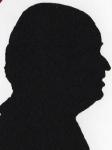Reviews by category
Sony Camera DSC-W290

This looks like many other small digital cameras with a huge TFT. However apart from a very small amount of internal memory it requires a card and because the camera is from Sony it will require their type of memory and not the far more easily available and reasonably priced SD cards.
It is 9.5x5.5x3cm the last figure can double when the lens is fully extended. It weights 175grams and my unit was black with a chrome strip around the unit.
The left side is blank apart from the wording to remind you it has 5x optical zoom. The right side has the wrist strap anchor point. The base has a tripod anchor point, the solid battery cover that is also where the MS card is inserted and proprietary USB lead connection. The top has on/off button, rod shutter release and a smile button. The front has the lens and the slit flash that is mounted above and to the right of the lens a minimum of 1.5 from it.
This leaves the back that is totally dominated by the 6x4.7cm TFT, to the right of this is the wide angle / telephoto rocker, below this the five position wheel, the viewing image button. The menu button and delete buttons are at the bottom with the ubiquitous five position joystick control above.
Pressing the menu button brings an eight option choice on the left, the top one is the different image sizes and these are arranged somewhat differently to most with are the 4:3 shown first this is 12MP, 8MP, 5MP, 3MP and VGA, next is a 3:2 image at 11MP and then the widescreen 16:9 at 9MP and 2MP. 5MP is more than enough to get an excellent A4 image. The next option is normal or burst mode. Next is the ‘EV’ image adjustment. Next Scene Recognition and then a feature that I still am not convinced works smile detection here there are three smile types. Next face detection and this has four modes off, auto, child priority and adult priority. Next Red Eye on, off or auto. The final choice is the ability to enter the screens to set sounds and time and date etc.
If you turn the wheel to movies the options are Auto, High Sensitivity and Under Water. There are three shooting modes 1280x720 (fine) 1280x720 (standard) and 640x480. I found that a 30 second clip taken in standard mode used around 22MB of space. Next is EV adjustment and then White Balance which apart from the default of auto has six other settings for various types of light. Focus has multi AF and infinite. Next Metering Mode which can either be based on the whole image or the central brightness. Colour Mode is normal, sepia and black & white. Steady Shot on/off, and finally the ability to set sounds time and date etc.
The other wheel choices are Scene Mode with ten choices, Program Area that is described as Auto Expose with adjustable settings. Finally there is Easy Shooting where there are very few options this latter setting is for the real beginner.
The way items are stored on the card are a little different with all the shots taken on a date shown as 1 to ‘x’ on the replay screen and the next shooting day shown as 1 to ‘x’ of that date etc. However when you look at the card in Windows the images are stored with the normal sequential number system.
I noted that you could not zoom into a scene while taking a movie clip and this could be a problem, the only way was to stop and then zoom in and start filming again.
A camera with lots of nice features but with the odd quirk. I was happy with all the still images I took and also with flash images taken up to around 10feet.
This unit was supplied to me by Jessops and it can be found on their site at £199. It is also available in Silver and Blue. I cannot find it on the Sony Site so only the Jessops link is below.
| add to del.icio.us | Digg this review |
| StumbleUpon | |














 !!
!!









